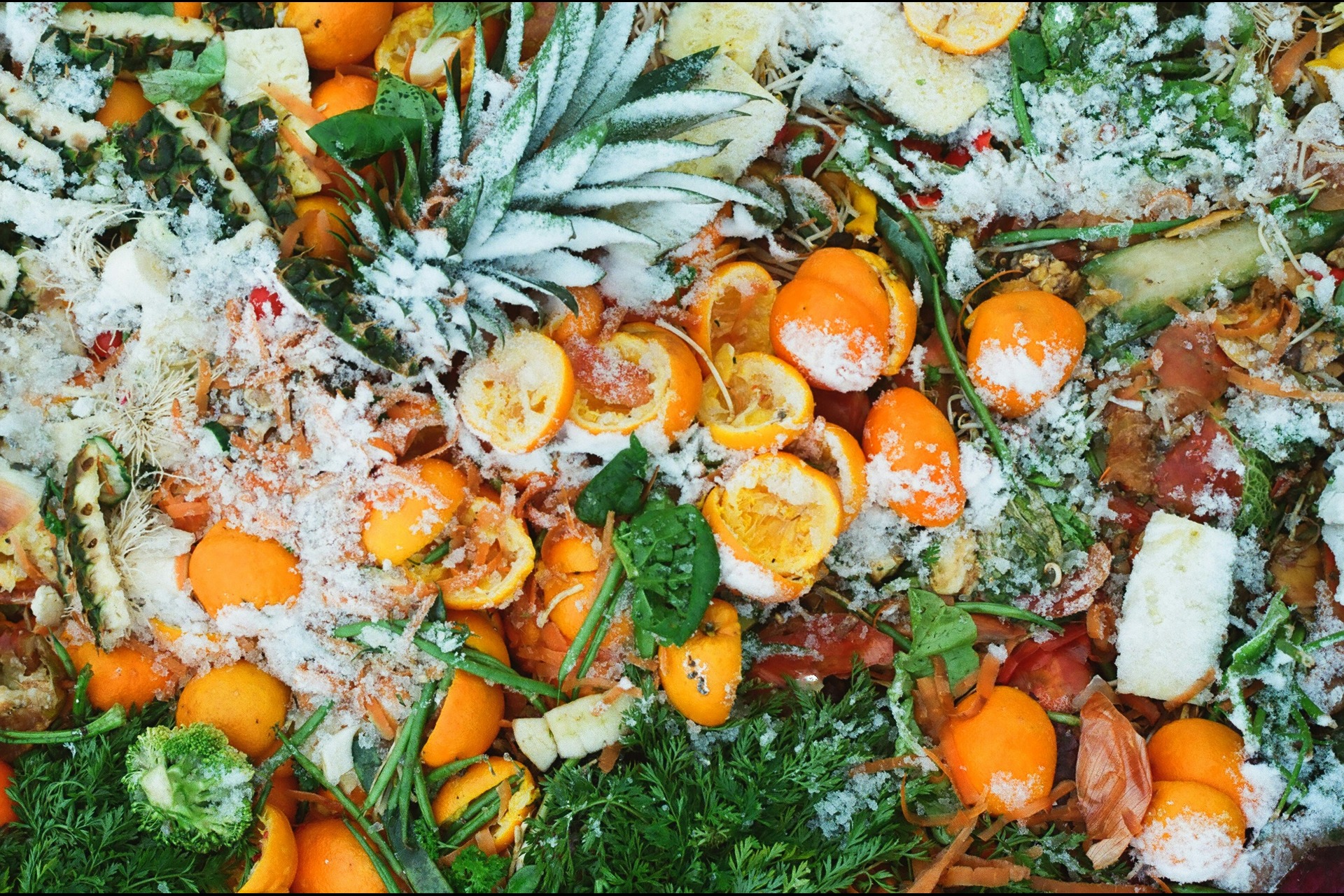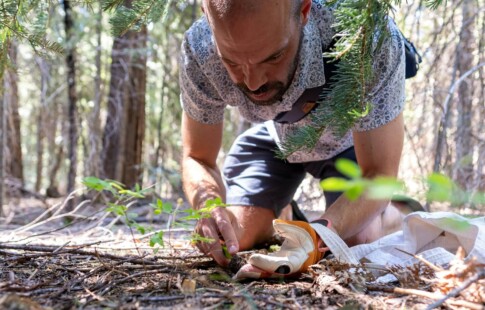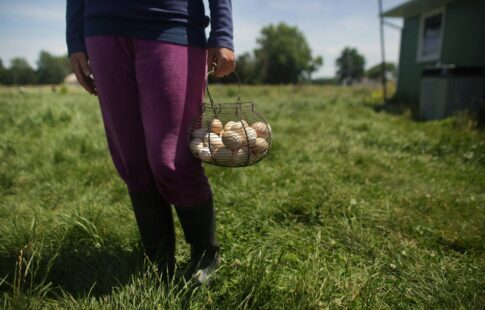
What Is a Sustainable Food System and How Can We Create One?
We are reader-supported. When you buy through links on our site, we may earn affiliate commission.
It’s a strange paradox that the world produces more than enough food to feed every person on the planet. And yet, millions of people across the globe still grapple with food insecurity and malnutrition. The reason isn’t that there is no food, but the systems meant to distribute it are affected by climate change, economic inequality, and political instability. Meanwhile, the very act of growing food — plowing, planting, and processing — contributes significantly to the environmental crisis that threatens it.
This reveals the truth that developing sustainable food systems isn’t limited to nourishment alone. It’s a story of human survival on a planetary scale.
Defining a Sustainable Food System
A sustainable food system ensures everyone gets adequate food and nutrition without compromising the resources necessary for future generations to do the same. This means that the entire journey must be accounted for. According to the Food and Agriculture Organization (FAO), sustainability in food should:
- feed today’s and future generations
- remain viable for farmers, retailers, and workers
- be accessible regardless of race, income, or geography
- protect land, water, and biodiversity resources while reducing pollution.
The food system must be profitable for farmers. Otherwise, the whole system collapses. It should also be equitable without marginalizing any sector. Beyond human benefit, the long-term health of natural ecosystems must be prioritized, as food production largely depends on the environment to thrive.
This definition reflects a complex reality. Food systems span agriculture, processing, transportation, retail, consumption, and waste management — each layer influencing sustainability outcomes.
Why Sustainable Food Production Matters
With the global population expected to reach 9.8 billion in 2050, the pressure to feed everyone is mounting. Poverty, food shortage, and war and conflict remain the leading causes of hunger. Meanwhile, climate change already jeopardizes agricultural productivity and food availability. If adaptations remain insufficient, it’s likely that by 2050, global food yield will decline by as much as 30%.
It’s also critical to highlight that not all food produced makes it to the table. Around 40% of food gets lost along the supply chain, between the farm and the fork. The United States alone discards more food than any other country, wasting nearly 60 million tons annually.
This goes beyond logistical issues. It’s a moral and environmental one. When food is wasted, so too are the land, water, energy, and labor that went into making it. In a world where millions go hungry and the climate crisis is accelerating, this level of inefficiency is unsustainable. One thing is clear. The way the world produces food must change fast. It’s not just about growing more but about growing smarter.
How to Cultivate Sustainable Food Systems
Creating a sustainable food system goes beyond production and examines each aspect of the soil-to-supermarket, plate-to-landfill process.
Sustainable Agricultural Practices
Today, many forward-looking practices are reshaping what it means to farm sustainably. These include ensuring soil health isn’t degraded by farming, integrating pest management into the practice, managing water efficiently, and promoting biodiversity. Organic agriculture focuses on working with nature, not against it. Each method shares a common goal — to reduce agriculture’s environmental impact while ensuring reliable yields.
Soil Health
Healthy soil is the cornerstone of a thriving agricultural system. These practices focus on nurturing and protecting this vital resource.
- Crop rotation: Switching crops over consecutive seasons boosts productivity and breaks pest and disease cycles. A recent study found that diversified rotations increase yields by up to 38% and improve the balance of greenhouse gases by 88%. Crop rotation also maintains soil health by stabilizing nutrient levels, which can be depleted if the same crop is used continuously.
- Cover cropping: Planting cover crops during fallow periods reduces erosion, adds valuable organic matter to the soil, and suppresses weeds that compete for resources. These also improve soil structure, preventing compaction and enhancing water infiltration.
- Reduce tillage: No-till or reduced tillage farming benefits sandy and dry soils on sloping terrains by minimizing erosion caused by traditional plowing. Instead of digging over the soil, adding layers of compost and mulch improves aeration, preserves moisture, and benefits soil organisms like earthworms.
- Organic matter addition: Compost, manure, and other organic materials are reservoirs of essential nutrients that improve soil fertility and water retention. Each percent of organic matter in the soil releases up to 30 pounds of nitrogen, 6.6 pounds of phosphorus, and 3 pounds of sulfur annually, providing a slow-release source of plant nutrients.
Integrated Pest Management
Pesticides contaminate the water and soil and can linger for decades. One study found that approximately 70,000 tonnes of chemicals leach into aquifers. Moving away from harmful pesticides is crucial for protecting human health and the environment.
- Biological control: Instead of using synthetic pesticides, farmers can depend on biological control to reduce pests by relying on natural predators, parasites, and pathogens. This approach minimizes harm to beneficial insects and other non-target organisms.
- Regular scouting and monitoring: Regular scouting can identify pests early and assess their extent before outbreaks occur, allowing for timely and targeted interventions.
- Selective pesticide application: When pesticide use is necessary, selective application minimizes harm to non-target organisms and reduces the overall environmental impact.
- Resistant varieties: Planting disease-resistant varieties is among the most effective and inexpensive means for softening the impact of plant diseases, reducing the need for chemical measures.
Water Management
Two-thirds of the global population, or four billion people, face water scarcity for at least a month every year. Efficient water use is crucial to ensure less resource depletion.
- Smart irrigation: Traditional watering systems waste over 40% of the water diverted to farms due to evaporation, leaks, and inefficient distribution. Implementing efficient techniques, such as drip irrigation — which waters crops at the root — reduces water loss.
- Water harvesting: Collecting and using harvested rainwater for nonpotable uses, like irrigation, reduces expenses and reliance on traditional water sources. It also increases water availability and mitigates flooding.
Biodiversity and Ecosystem Services
Long-term sustainability includes growing crops, plants, and trees alongside crops to enhance the ecosystem and promote the diversity of living organisms.
- Polyculture: Growing multiple crops together can improve soil health, attract beneficial insects, and reduce pest pressure. The increased biodiversity also supports greater yields. A Great Grow polyculture experiment showed that 71.9% of the participants reported more productivity by area or 3.07 kilograms of harvest weight per square meter.
- Agroforestry: This method integrates trees into agricultural systems, providing shade, windbreaks, and habitat for wildlife. Trees also attract beneficial animals and insects that can help with pest control and pollination. Insectivorous birds can eat up to 500 million tons of insects annually.
- Supporting pollinators: Maintaining a diverse habitat with native and non-native wildflowers encourages beneficial pollinators. Bees and other insects pollinate 48 food crops worldwide, making them essential for food production.
Minimizing Environmental Footprint
True sustainability hinges on lessening fossil fuel reliance and reducing waste.
- Renewable energy: Agriculture contributes over 10% to the total greenhouse gas emissions. Solar, wind, and other renewable energy sources can support farm operations and reduce reliance on the grid. Agrivoltaics, in particular, or the use of solar power in farms, generates electricity alongside agricultural production and can even boost crop size. In Kenya, a test plot grew 24% larger cabbages that needed 47% less water for irrigation.
- Energy-efficient equipment: Energy-efficient farm machinery is rising as more electric and hybrid tractors surface in the market. This covers electric motors, optimized irrigation systems, and other farm equipment that rely on energy. Combining electric pumps with smart irrigation technologies can optimize water usage based on real-time weather data and soil conditions.
- Reduce waste: Agricultural waste includes plant residue like stems, branches, and leaves of harvested crops that are unavoidably discarded. Around 80% of the crop is plant residue, which is discarded, with the remaining 20% viable parts of the crop for consumption. Finding innovative ways to utilize this residue, such as composting or using it as a biofuel feedstock, can significantly reduce waste and create valuable resources.
Reducing Food Waste
One of the most effective ways to reduce food loss is right after the harvest. Independent farmers can lose up to half of their crops due to plant disease or poor postharvest handling. Crops may never reach the marketplace simply because storage facilities are outdated or transport routes are inefficient.
Investing in modern storage facilities that protect perishable goods from pests, moisture, and heat can dramatically extend food’s shelf life. Similarly, improving transportation networks and cold chains ensures food travels from farm to market without unnecessary spoilage.
But experts caution that it’s not only about infrastructure. Consumer habits, often overlooked, contribute significantly to food waste. In households, waste usually comes down to small decisions — overbuying, misreading expiry dates, or simply not planning meals efficiently. These may sound like minor issues, but they add up to billions of tons of food tossed yearly.
Feeding the Future Begins Today
A sustainable food system is a product of various sectors of society that contribute to its success, and it is not just the responsibility of farmers and scientists. Innovative farming practices are only the first step. The real challenge is strengthening the entire food chain — supporting farmers’ livelihoods, easing pressure on natural resources, and ensuring equitable access to nutritious food. Sustainable food systems are not built solely through innovation or policy — they’re shaped by practical changes, from smarter postharvest practices to conscious consumer choices.
As the world braces for population growth and climate challenges, cutting food waste becomes a powerful, immediate way to build resilience. A future where food is accessible, equitable, and environmentally responsible begins with how we value what’s already on our plates.
Share on
Like what you read? Join other Environment.co readers!
Get the latest updates on our planet by subscribing to the Environment.co newsletter!
About the author

Steve Russell
Steve is the Managing Editor of Environment.co and regularly contributes articles related to wildlife, biodiversity, and recycling. His passions include wildlife photography and bird watching.





